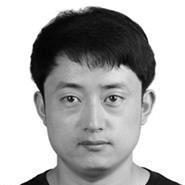Advances in Understanding and 3D Semantic Modeling of Large-Scale Urban Scenes from Point Clouds
A special issue of Remote Sensing (ISSN 2072-4292). This special issue belongs to the section "Urban Remote Sensing".
Deadline for manuscript submissions: closed (31 August 2023) | Viewed by 37836
Special Issue Editors
Interests: image-and LiDAR-based segmentation and reconstruction; full-waveform LiDAR data processing; related remote sensing applications in the field of forest ecosystems
Special Issues, Collections and Topics in MDPI journals
Interests: light detection and ranging data processing; quality analysis of geographic information systems; remote sensing image processing; algorithm development
Special Issues, Collections and Topics in MDPI journals
Interests: computer graphics; 3D computer vision; geometric deep learning; related applications including motion capture for VR/AR and LiDAR-based urban modeling
Special Issues, Collections and Topics in MDPI journals
Interests: remote sensing image processing; 3D urban reconstruction; spatial object recognition
Interests: 3D indoor modelling; 3D GIS; integration of BIM and GIS; 3D spatial analysis; DBMS; emergency response
Special Issues, Collections and Topics in MDPI journals
Special Issue Information
Dear Colleagues,
Driven by many applications and the improvement of 3D data acquisition technology, computer vision, and remote sensing communities are now focusing on deep learning-based and knowledge-based algorithms to tackle the challenges in understanding and 3D semantic modeling of large-scale urban scenes. The scene understanding and physical modeling from point clouds include enhancement and segmentation at the scene, object, and part level, shape recognition, indoor and outdoor abstraction, and reconstruction, and an optional simplification to make the 3D model web and/or mobile compatible. Although the recent advanced deep-learning algorithm exhibits a powerful performance on low-level recognition tasks such as classification and segmentation, scant attention has been given to deep learning for large-scale 3D urban modeling due to a lack of available training data or benchmark repositories. Other challenges include detail modeling from imperfect (occluded, noisy) scans, free-from building modeling, lightweight modeling for web/mobile compatibility, flexible modeling which generates multiple Levels of Detail (LoDs) on the fly, and automated reconstruction from large-scale urban point clouds, to name a few. We position our Special Issue to support the ongoing efforts in 3D scanning and modeling industry and applications of LiDAR/RGB-D/photogrammetric point clouds. The topics of this Special Issue include, but are not limited to:
- Enhancement, registration, filtering of point clouds;
- Semantic, instance, panoptic, and part-level segmentation;
- Large-scale outdoor scene and indoor scene reconstruction;
- Detail synthesis and implicit modeling of urban scenes;
- 3D modeling of buildings, bridges, roads, trees, and utilities;
- Rendering and visualization of urban scenes;
- Polyhedral meshes, procedural models and model simplification;
- Innovative applications in smart cities, VR/AR, autonomous driving, indoor navigation, etc.
Dr. Dong Chen
Dr. Zhengxin Zhang
Dr. Jiju Poovvancheri
Prof. Dr. Takis Mathiopoulos
Prof. Dr. Sisi Zlatanova
Guest Editors
Manuscript Submission Information
Manuscripts should be submitted online at www.mdpi.com by registering and logging in to this website. Once you are registered, click here to go to the submission form. Manuscripts can be submitted until the deadline. All submissions that pass pre-check are peer-reviewed. Accepted papers will be published continuously in the journal (as soon as accepted) and will be listed together on the special issue website. Research articles, review articles as well as short communications are invited. For planned papers, a title and short abstract (about 250 words) can be sent to the Editorial Office for assessment.
Submitted manuscripts should not have been published previously, nor be under consideration for publication elsewhere (except conference proceedings papers). All manuscripts are thoroughly refereed through a single-blind peer-review process. A guide for authors and other relevant information for submission of manuscripts is available on the Instructions for Authors page. Remote Sensing is an international peer-reviewed open access semimonthly journal published by MDPI.
Please visit the Instructions for Authors page before submitting a manuscript. The Article Processing Charge (APC) for publication in this open access journal is 2700 CHF (Swiss Francs). Submitted papers should be well formatted and use good English. Authors may use MDPI's English editing service prior to publication or during author revisions.
Keywords
- point cloud enhancement
- semantic segmentation
- instance segmentation
- panoptic segmentation
- outdoor reconstruction
- indoor reconstruction
- urban utilities modeling
- efficient data structures
- model simplification
- intelligent applications
Benefits of Publishing in a Special Issue
- Ease of navigation: Grouping papers by topic helps scholars navigate broad scope journals more efficiently.
- Greater discoverability: Special Issues support the reach and impact of scientific research. Articles in Special Issues are more discoverable and cited more frequently.
- Expansion of research network: Special Issues facilitate connections among authors, fostering scientific collaborations.
- External promotion: Articles in Special Issues are often promoted through the journal's social media, increasing their visibility.
- Reprint: MDPI Books provides the opportunity to republish successful Special Issues in book format, both online and in print.
Further information on MDPI's Special Issue policies can be found here.









